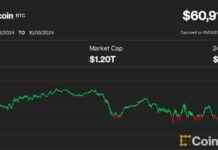Wall Street had a bit of a rough day on Tuesday as investors decided to take a step back from tech stocks and bond yields decided to make a comeback, putting some pressure on the stock market. The Dow Jones Industrial Average took a hit, dropping by 114.83 points, which is about 0.27% for those keeping track. The S&P 500 also dipped by 0.39%, ending a six-day winning streak that had everyone feeling pretty good.
Over on the Nasdaq Composite, things weren’t looking much better as chipmakers and megacaps decided to retreat, causing the index to slide by 0.38%. Companies like Nvidia, AMD, Meta, Apple, and Microsoft all saw losses, making the tech sector the worst performer of the day with a nearly 0.9% fall. It’s like the tech sector just couldn’t catch a break.
This pullback comes after a nice five-week rebound that saw the S&P 500 climb more than 20% off its April low. Everyone was feeling optimistic about tariff de-escalation after President Trump’s announcement, but now there’s a bit of uncertainty in the air. Bill Northey from U.S. Bank Wealth Management put it best when he said, “We’ve had the swoon related to tariffs, the furious rally, and now we’re awaiting clarification. It’s optimism without clarity.” And let’s be real, who doesn’t love a good dose of optimism mixed with a hint of confusion?
Bond markets decided to add to the unease by showing some movement. The 10-year Treasury yield went up to 4.48%, while the 30-year briefly topped 5% for the second day in a row, the highest it’s been since November 2023. Moody’s even downgraded U.S. debt, citing those pesky ballooning deficits and rising interest expenses as the main reasons behind their decision. Equity valuation challenges are definitely on the horizon.
Analysts are saying that when yields hit or go above 4.5%, it tends to mess with equity valuations. Manulife’s Matthew Miskin even questioned, “If the 30-year is breaking out, does that mean the rest of the curve is next?” It’s like a mystery waiting to be solved. Michael Wilson from Morgan Stanley chimed in, noting that equities always seem to struggle when the 10-year yield breaches 4.5%. It’s like a never-ending cycle of ups and downs in the stock market.
In other news, Tesla shares managed to rise by 2% after Elon Musk made it clear that he’s sticking around as CEO for at least five more years. And on the political front, President Trump couldn’t quite get GOP holdouts on board with a key tax bill, putting its passage before Memorial Day in jeopardy. Maybe it’s just me, but it seems like there’s always some kind of drama happening in the world of politics and finance.
And there you have it, folks. Another day on Wall Street filled with ups, downs, uncertainty, and a sprinkle of optimism. Who knows what tomorrow will bring, but one thing’s for sure – the stock market never fails to keep us on our toes.














